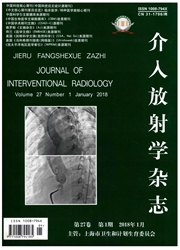

 中文摘要:
中文摘要:
目的 研究流-固耦合作用下左冠状动脉内一个心动周期典型时点两相血流动力学分布及红细胞分布,探索左冠状动脉粥样斑块形成与发展机制。方法 将血液视为两相流体,基于血液与血管壁间流-固耦合作用,采用计算流体力学方法对左冠状动脉内两相血流进行瞬态数值模拟,研究一个心动周期内典型时点左冠状动脉内血流分布特性,血流动力学特性参数与动脉粥样斑块形成的相互作用关系。结果 左冠状动脉回旋支远段和钝缘支近心端外侧存在低速涡流区,该区域内壁面切应力和红细胞体积分数均较小,血流流态复杂。结论 壁面切应力较小的低速涡流区易产生脂质浓度极化、大分子物质沉积,红细胞较少区域易发生缺氧,引起血管壁通透性增加和内膜损伤,激活免疫系统,导致血管壁物质累积和内膜生长,从而易诱发动脉粥样硬化斑块形成。
 英文摘要:
英文摘要:
Objective To study the two-phase flow dynamics distribution and red blood cell distribution under the fluid-solid coupling interaction in left coronary artery at the typical time point within one cardiac cycle, and to investigate the formation and development mechanisms of left coronary artery atherosclerotic plaque Methods The blood was regarded as a two-phase fluid. Based on fluid-solid interaction between blood and vascular wall, the computational fluid dynamics method was used to make the transient numerical simulation of two-phase flow in the left coronary artery under fluid-solid interaction; the distribution of blood flow in the left coronary artery at the typical time point within one cardiac cycle was studied, the relationship between hemodynamic parameters and the formation of atheroselerotic plaque was analyzed. Results A low- speed eddy zone existed in an area between the distal segment of circumferential branch and the proximal outside of blunt-edge branch of the left coronary artery, where both internal wall shear stress and red blood cell volume fraction were very small and the blood flow pattern was very complicated. Conclusion At the low- speed eddy zone that carries small wall shear stress, the lipid concentration polarization and maeromolecular material deposition are easy to be produced. The area that has less red blood cells is liable to develop hypoxia, resulting in increased vascular wall permeability and intimal injury, which will activate the immune system, causing lipid accumulation in vascular wall and intimal hyperplasia and, thus, to induce the formation of atherosclerotic plaque.
 同期刊论文项目
同期刊论文项目
 同项目期刊论文
同项目期刊论文
 期刊信息
期刊信息
